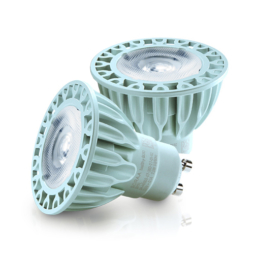Getting the lighting right when we spend 90% of time indoors
It’s a bit of a shocker to learn that people in the UK spend 90% of their time indoors – so we need to get the lighting right.
While the urge to be inside – safe and sheltered – is a deep-seated human trait, in the modern era it can be an instinct that creates more problems than it solves.
The simple fact of being inside for up to 22 hours – according to research from Omnium – can lead to anxiety, insomnia and other issues that can affect health and wellbeing. Which is why we all need to pay attention to the lighting that surrounds us, whether at work, studying or at home.
It’s commonly known that natural light from the sun has beneficial effects on our minds and bodies. Being exposed to the sunlight regularly throughout the day helps to keep our internal balancing mechanism – the circadian clock – working with optimum effect.
Energy levels
This internal clock helps to regulate a wide range of things, from sleep and appetite to mood and energy levels. Research by the University of Colorado and by lighting manufacturer Soraa shows that lack of natural light, twinned with poor quality artificial lighting, does tend to disrupt our internal rhythms.
This is even more pronounced when people have to work indoors at night with studies indicating negative effects on health and wellbeing with greater risk of obesity, diabetes and depression, along with substance abuse and other conditions.
Research from Ambius reveals that UK office staff spend very little time out of the workplace during an average day with almost 40% being outside for a maximum of 15 minutes, excluding travel to work.
The survey found that office staff spend more time each day at their desk or workstation (6.8 hours) than in bed (6.4 hours) or relaxing at home (3.5 hours).
Time outdoors
It has been a great summer so far but the study by Omnium reveals that 45% of those who responded to the survey say that the weather often prevents them from spending more time outdoors. And work commitments were also a limiting factor for a fifth of them (22%).
At the same time, the indoor habit is worrying for many people. Over a third (36%) of parents think that their children do not spend enough time outside, while one in six (16%) are not sure how much time outdoors is sufficient.
More than half (55%) of parents feel their children spend less time outdoors than they did when they were a child. Over two-thirds (68%) of parents worry that their children’s health is affected by the amount of time they spend indoors.
They also worry about how they spend their time indoors, with over half saying that watching TV (54%) and playing computer games (52%) too much will affect their health. And 48% believe that too much time on social media affects their health.
Indoor children
A National Trust survey has also found that three-quarters of UK children spend less time outside than prison inmates with a fifth of children not playing outside at all on an average day.
With all these anxieties and pressures, it makes sense to not only find ways to get out more and enjoy the benefits of the natural world but also really focus on the type of lighting that benefits people while they are indoors – both at work and at home.
Did you know that around 80% of the sensory input we receive at work actually comes through our eyes? That’s a good enough reason to focus on the quality of light in our offices and other workplaces.
The right lighting will not only be appropriate for the range of tasks to be done but also will provide a good foundation for maintaining and even improving the way we feel mentally and physically. And this has a beneficial effect on our alertness and accuracy.
Healthier brains
A report by the American Institute of Architects advises that, used correctly, LED lights can stimulate healthier brains and deeper sleep, with improved concentration and energy as well as lower stress, less anxiety and increased motivation.
Because LEDs provide an even distribution of colours this means we see these tones better while objects can be more sharp and clear. The colour temperature and rendering as well as efficiency of LED lights contribute to a better environment at work, while studying and at home.
Most of us know the feeling we get after spending a long time under traditional fluorescent lighting – and the relief when we step out into the open air and natural light. That’s because of the particular and quite poor spectral output of fluorescent tubes, which can easily be remedied with quality LED replacements.
The winter blues also affect a large number of people and LED lighting is beneficial in the treatment of Seasonal Affective Disorder (SAD). Studies show it can improve mood and lower stress because the lighting spectrum mimics natural sunlight.
Human-centric lighting
Our own intuitive experiences and the wealth of new studies are helping to shape the move to human-centric lighting (HCL), which focuses on specifying and advocating the most appropriate light to support our circadian rhythms.
We need high levels of light to stay alert for work or study while in the evening we need to feel more relaxed and ready for sleep.
Companies like Soraa are at the forefront of LED lighting innovations that are focused on wellbeing and their Healthy range is designed to provide the type of light that supports our natural rhythms as we wind down in the evenings.
The choice of quality LED lighting is broad and there are now excellent solutions for every environment and budget.

